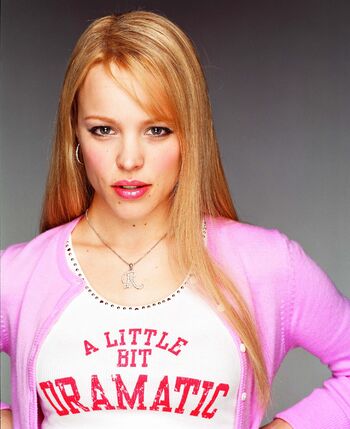OPINION: Traditional television tropes hurt and misrepresent women

Movies vilify female characters like Regina George from Mean Girls by using harmful stereotypes about women.
For as long as I can remember, I have seen women portrayed in film and TV in a few ways: the girly girl, the cool girl who isn’t like other girls and the girls who are defined by their ethnicity, such as the spicy Latina. Why do we do this to women?
In “Mean Girls” (2004), we see Regina George (Rachel McAdams) and her Plastics, a team of three girly girls who rule the school. They’re pretty, they’re popular, they’re catty and on Wednesdays they wear pink (but really it’s almost every day), but they’re nothing more than that. The trope assigned to them is what they are, through and through.
Take Regina’s henchwomen, Gretchen Weiners (Lacey Chabert) and Karen Smith (Amanda Seyfried). Karen is the epitome of a “dumb blonde” and Gretchen is the dramatic queen of gossip. The problem with this is that, because of the box they’ve been put in as characters, we as an audience are forced to see them negatively.
Then comes Cady Heron (Lindsay Lohan), a transfer student from Africa who has been homeschooled all her life. We’re forced to root for Cady, even after she proves to enjoy the power she wields as a plastic. She’s just different, not like other girls. She’s socially awkward and doesn’t care about shopping or make up. Because of this, and because she’s been placed in the role of protagonist, she’s who is supposed to get her happy ending, not the plastics, who are vain and surface-level.
It comes as no surprise that the writer and director of this cult classic is Tina Fey, who often relies on Asian stereotyping for comedic effect in her films and TV shows.
As we see in Cady’s character, the cool girl trope is seen as supreme. The cool girl is one of the guys and is supposed to contrast the girly-girls on screen. A prime example is Julianne (Julia Roberts) in “My Best Friend’s Wedding” (1997). Julianne is the best friend of Michael (Dermot Mulroney), who she just found out is getting married to the young, girly and rich Kimmy (Cameron Diaz). Julianne is of course, a guy’s girl, who uses her charm and laid-back disposition to try to win Michael back and convince him to marry her instead.
The problem with this is that even though Julianne is doing bad things, like forcing Michael to quit his job, we still root for her because we hate Kimmy and how pretty, blonde and perfect she is. We like Julianne, with her wild curls and journalist’s seriousness, which balances her ability to chug a few beers with the guys while maintaining a flat tummy. In the end, we pit the two women against each other. We want one to get the guy.
Another example of how women are negatively portrayed in TV is Gloria Delgado-Pritchett (Sofía Vergara) on “Modern Family” (2009-2020). She is the epitome of the Western media’s spicy Latina trope; she’s loud, unafraid to speak her mind and is often portrayed showing off her body.
That’s not to say there’s anything wrong with those things, but Gloria’s entire personality is centered around her trope and is meant to show us that Latinas are only one way. This perpetuates the idea that Latinas can and should be sexualized, Many men have only seen them portrayed as one type of person that they can easily objectify and who will seduce them in return.
So, if we’re not objectifying women, and we’re not hating them and pitting them against each other, what are we doing? I think it’s time to put an end to these tropes as we know them and start writing female characters that aren’t just one-dimensional. It’s time to see Latinas as more than just feisty and hypersexual, and to stop festishizing women for their ethnicities. Film and TV writers, it’s past time to do better.






